In the dynamic landscape of the UK property market, the concept of rent-to-rent HMO (House in Multiple Occupation) presents a compelling strategy for professional landlords, property owners, and real estate professionals aiming to maximise their property returns. This innovative approach offers a pathway to generate significant cash flow from rental properties without the hefty initial investment typically associated with purchasing real estate.
What is Rent to Rent HMO?
Rent-to-rent HMO is an investment strategy that involves leasing a property from a landlord and then subletting it as an HMO to individual tenants. The essence of this approach lies in the ability to secure a property for a lower rental cost, and then capitalise on the demand for shared accommodation by renting out each room separately at a higher total rent. This method allows investors to harness the profitability of HMOs without the need for a large deposit or securing a mortgage.
How It Operates
The process begins with identifying a landlord who owns a property already configured as an HMO. With clear communication and agreement, you enter into a lease with the landlord, subsequently subletting the property to tenants. The goal is to set the sublet rent at a level that exceeds your rent to the original landlord, thereby generating a positive cash flow. This strategy is especially appealing for those with limited capital to invest but eager to tap into the HMO market.
The Benefits Unpacked
- Enhanced Cash Flow: Rent-to-rent HMOs offer the potential for considerable cash flow improvement, thanks to the difference between the rent paid to the landlord and the rent received from tenants.
- Bypassing Large Financial Barriers: This approach eliminates the need for a mortgage or a substantial deposit, barriers that often deter would-be investors.
- Repurposing Potential: It also opens up opportunities to transform underutilised properties, such as student HMOs, into thriving accommodations for different demographics like young professionals, thereby revitalising assets for higher returns.
For landlords, property owners, and real estate professionals looking to expand their portfolio or enter the property investment realm with minimal upfront costs, rent-to-rent HMO offers a viable and profitable strategy. As we delve deeper into this investment approach, we'll explore the legal, operational, and financial nuances to ensure you're well-equipped to navigate this opportunity successfully.
Table of Contents
What is Rent to Rent HMO?
In the bustling UK property market, the concept of Rent to Rent HMO (House in Multiple Occupation) stands out as a strategic investment model that diverges from traditional rental practices. This approach offers a unique opportunity for investors and property managers to capitalise on the rental sector without the substantial financial commitment of property ownership.
Defining Rent to Rent HMO
Rent-to-rent HMO is an innovative property management strategy where an individual or company leases property from a landlord and subsequently sublets it to multiple tenants. Unlike conventional rental agreements that typically involve a single tenant or family, HMOs are designed to accommodate multiple unrelated tenants, each renting individual rooms within the property. The core distinctions of this model include:
- Ownership: In a Rent-to-rent HMO arrangement, the investor does not own the property but secures the right to manage and sublet it, creating a layer of separation from traditional ownership responsibilities.
- Subletting Dynamics: The property is then sublet to individual tenants, with the investor or manager taking on the role of overseeing these tenancies, ensuring property maintenance, and adhering to HMO regulations.
- Profit Generation: The objective is to achieve a rental income that exceeds the lease cost paid to the original landlord, thereby generating a profit margin through efficient management and occupancy rates.
The Appeal of Rent to Rent HMO
The attractiveness of the Rent to Rent HMO model lies in its accessibility and profitability:
- Low Entry Barrier: It enables individuals to engage in the property market with minimal upfront investment, bypassing the need for property acquisition.
- High Demand: With the growing need for affordable and flexible housing solutions, especially in urban areas like Birmingham and London, rent-to-rent HMOs meet a critical market demand.
- Versatility: This model offers the flexibility to revitalise underutilised properties, such as transforming student accommodations into professional lets, thus broadening the investor's market reach.
- Mutual Benefits: For property owners, Rent to Rent HMO presents a hassle-free solution to ensure consistent rental income and property care, making it an appealing option for landlords seeking a hands-off approach.
Rent-to-rent HMO embodies a strategic fusion of entrepreneurship and property management, providing a lucrative pathway for investors to generate income while offering quality housing solutions. As we delve deeper into the nuances of Rent to Rent HMO, understanding its legal, operational, and financial aspects becomes crucial for anyone looking to explore this dynamic segment of the real estate market.
Legal Essentials for Operating a Rent-to-Rent HMO
Navigating the legal landscape of Rent-to-rent HMO (House in Multiple Occupation) is crucial for professional landlords, property owners, and realtors. Understanding and adhering to the key legal requirements not only ensures the safety and well-being of tenants but also protects landlords from potential legal repercussions. Here’s a concise guide to the legal essentials of running a Rent to Rent HMO.
Understanding HMO Licensing
An HMO requires a license from the local council when housing five or more occupants from two or more separate households. This licensing is pivotal as it:
- Ensures the property meets specific safety and management standards.
- Helps maintain the quality of shared housing.
- Excludes certain properties such as care homes and religious community properties from its ambit.
Key Legal Requirements for HMOs
To comply with HMO regulations, landlords must focus on several areas:
- Electrical Safety: All electrical equipment must be safe for use. While mandatory inspections aren't required, regular testing is highly recommended to ensure tenant safety.
- Fire Safety: Adhering to HMO fire safety regulations is non-negotiable. This includes installing smoke detectors and carbon monoxide alarms throughout the property.
- Gas Safety: Conducting annual gas safety checks is essential to ensure all gas appliances are safe and well-maintained.
- Minimum Room Size: HMOs must comply with minimum room size requirements to be considered fit for occupancy.
- Fitness for Human Habitation: Landlords must ensure the property is habitable and maintained in good condition.
- HMO Management Regulations: It’s imperative to follow specific management rules that govern the operation of HMOs.
- Tenancy Deposit Protection: Protecting tenants’ deposits in a government-approved scheme is a legal requirement.
- General Data Protection Regulation (GDPR): Proper handling of tenant data in accordance with GDPR is essential for privacy protection.
The Consequences of Non-Compliance
Failing to meet these legal requirements can have significant consequences, including:
- Unlimited Fines: Landlords operating an unlicensed HMO can face fines ranging typically from £10,000 to £40,000 or even higher in some cases.
- Rent Repayment Order (RRO): Courts may order the repayment of up to 12 months of rent received during periods of non-compliance.
- Prosecution and Criminal Convictions: Serious breaches can lead to criminal convictions, tarnishing a landlord's reputation and operational capacity.
- Appeals: Landlords have the right to appeal decisions to the First-Tier Tribunal (Property Chamber – Residential Property), providing a legal recourse for disputed compliance issues.
For landlords venturing into the Rent-to-rent HMO market, strict adherence to these legal standards is not just about compliance; it's about establishing a safe, profitable, and sustainable business model. Ensuring your HMO meets these requirements not only fosters a positive living environment for tenants but also solidifies your reputation as a responsible landlord in the competitive property market.
Identifying Potential HMO Properties: A Guide for Landlords
In the realm of property investment, Houses in Multiple Occupation (HMOs) present an attractive opportunity for landlords seeking to maximise their rental yields, particularly in bustling urban areas like Birmingham and London. Here are some strategic tips for identifying properties that are ripe for conversion into profitable HMOs.
Property Size and Layout
- Spaciousness: Opt for properties that offer ample space to accommodate multiple tenants comfortably. This not only enhances tenant satisfaction but also complies with legal standards for living space.
- Room Requirements: Pay attention to floor area requirements, such as the minimum size of 6.51 square meters for single occupants aged over 10 years, to ensure each room meets legal living space criteria.
- Suitable Configurations: Victorian houses or properties with similar generous room configurations are often ideal candidates for HMO setups due to their inherent spaciousness and architectural layout.
Condition and Amenities
- Bathroom Facilities: Verify that the property has adequate bathroom facilities that meet the needs of multiple occupants. This includes ensuring all baths, toilets, and wash-hand basins are in working order and that there's sufficient heating and ventilation in these areas.
- Kitchen Arrangements: For HMOs lacking individual cooking facilities in units, a communal kitchen becomes a necessity. Ensure the kitchen space can accommodate the cooking needs of all tenants.
- Prime Locations
- High Demand Areas: Focus your search on areas known for high demand in shared accommodation. Locations such as Edgbaston and Erdington in Birmingham are prime examples, offering proximity to the city centre, amenities, transport links, and universities.
- Tenant Demographics: Understanding local trends and tenant demographics is crucial. Areas with a strong presence of students, young professionals, or workers in need of short-term accommodation are ideal.
Rental Yields
- Profitability: HMOs are renowned for their potential to deliver higher rental yields compared to standard buy-to-let properties. In cities like Birmingham, the average rental yield for HMOs notably surpasses both London and the UK average, making them an enticing option for investors.
When scouting for potential HMO properties, it's essential to consider the combination of size, condition, location, and the potential for high rental yields. These factors collectively determine the viability of a property for successful HMO conversion. By prioritising properties that meet these criteria, landlords can secure investments that not only comply with legal standards but also promise substantial returns in the competitive rental market.
🚀 Build a Thriving Airbnb Business with Houst
Monetize short-term rentals without owning property. Our Airbnb Business Partnership Program helps you start, scale, and automate a profitable Airbnb business with smart pricing, automation, and expert support.
💡 No Property Needed
📈 Expert Growth Strategies
🤖 Automated Hosting Tools

⭐ Rated 4.8/5 by 2,500+ Hosts
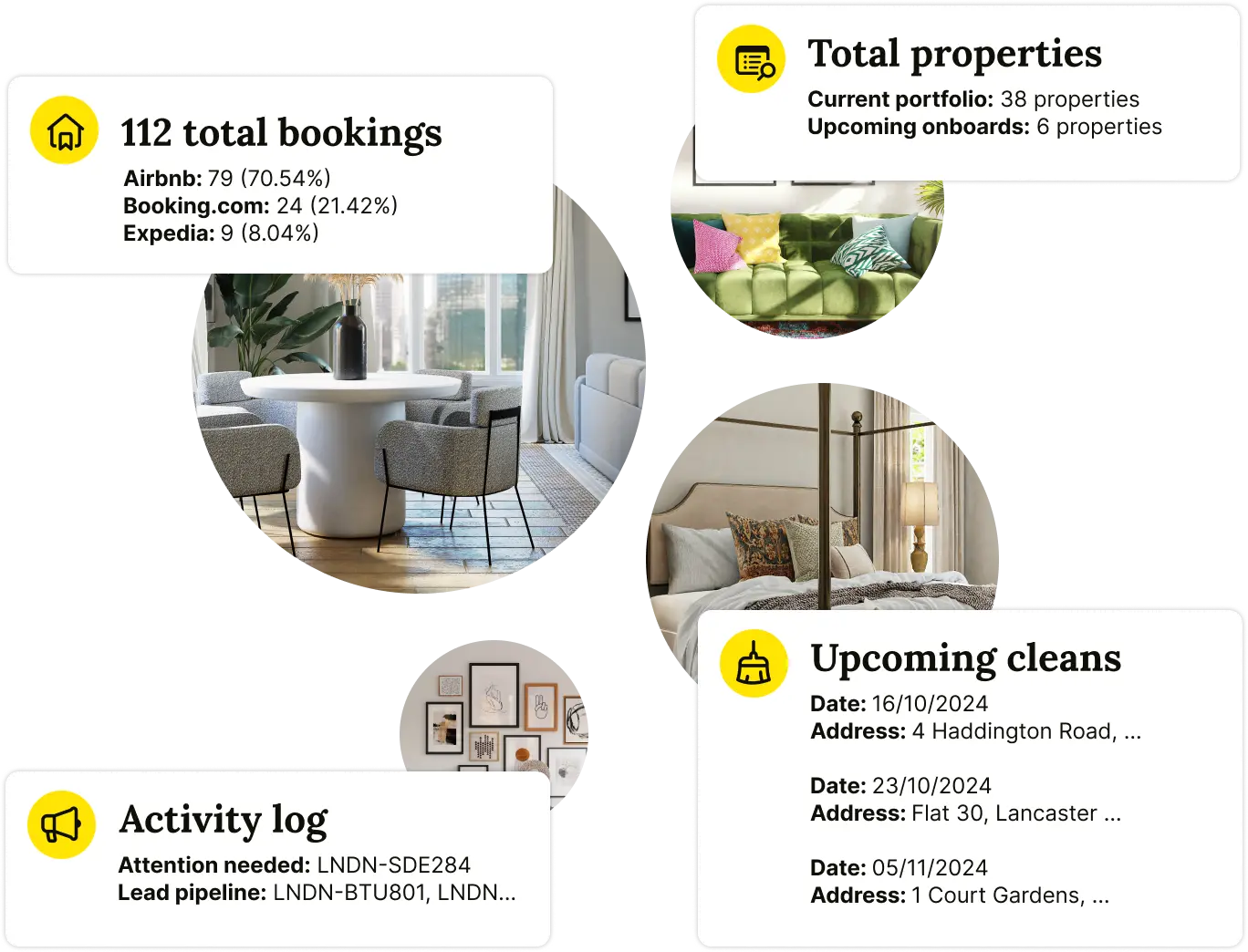
🧼 Airbnb Cleaning & Turnovers, Done Right

⭐ Rated 4.8/5 by 2,500+ Hosts
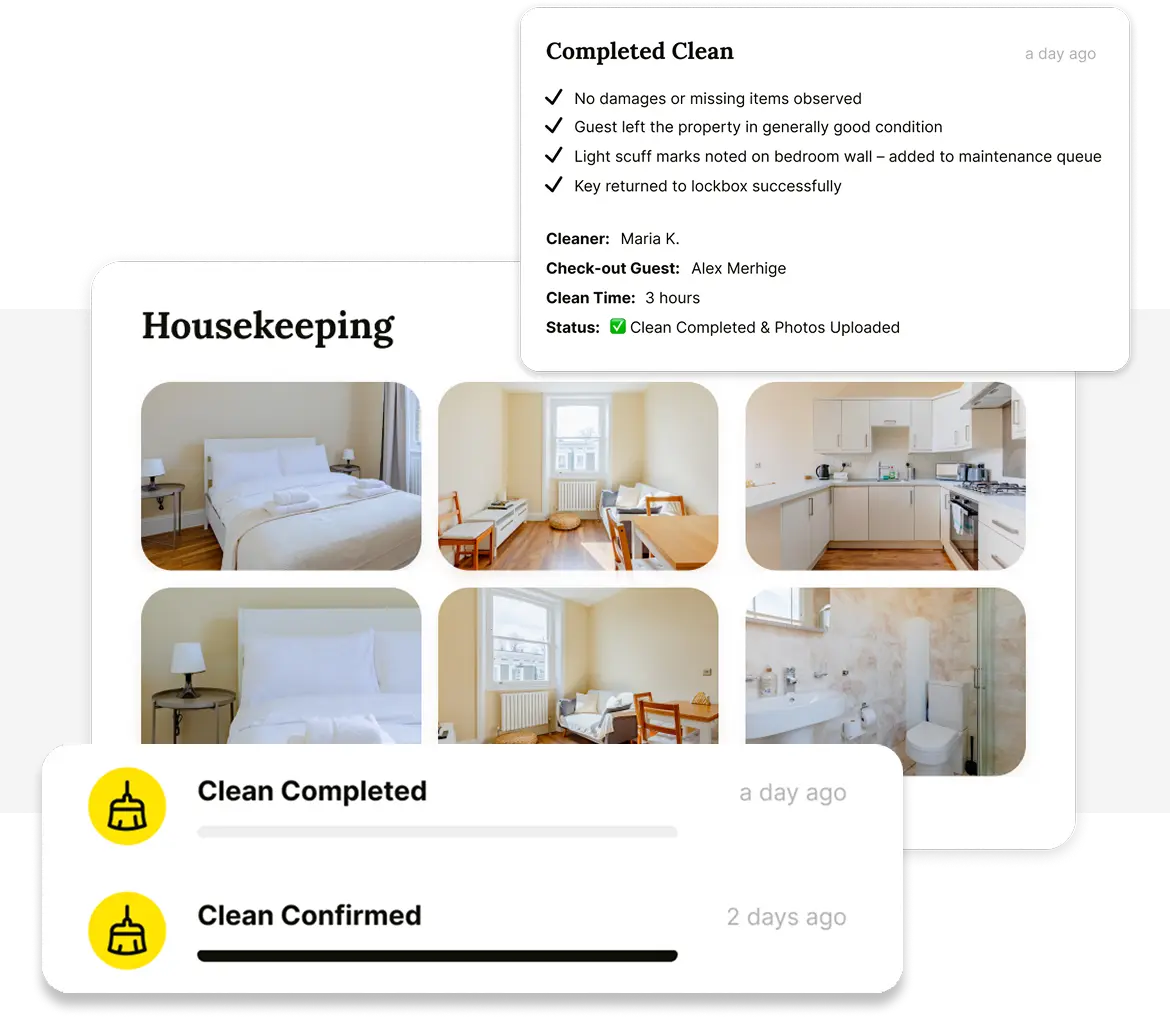
📊 Exploring the Rent to Rent Property Market in the UK – A breakdown of market trends, key risks, and potential ROI for aspiring rent-to-rent investors.
👉 Read the Guide: UK Market Overview
Crafting an Effective Rent-to-Rent HMO Contract
In the intricate world of property management, particularly within the realm of Houses in Multiple Occupation (HMOs), crafting an effective rent-to-rent HMO contract is paramount. This document not only formalises the agreement between landlords and tenants but also serves as a cornerstone for a successful and legally sound rental operation. Here’s a guide to assembling a rent-to-rent HMO contract that prioritises clarity, legal compliance, and mutual understanding.
Understanding the Type of Tenancy
- Assured Shorthold Tenancy (AST): For most rent-to-rent HMO scenarios, the agreement will align with the Assured Shorthold Tenancy model. This standard contract applies unless the annual rent exceeds £100,000 or if the landlord plans to reside in the property, thereby classifying occupants as lodgers.
- Adaptability: Depending on your specific arrangement and the property's income, the contract type may vary. It’s crucial to choose the correct tenancy type to ensure the agreement’s legal standing and applicability.
Defining Responsibilities and Rights
- Clear Terms: A fundamental element of the contract is a clear articulation of both the landlord's and tenants' responsibilities and rights. This clarity is vital for avoiding misunderstandings and potential disputes, ensuring smooth operations throughout the tenancy period.
- Comprehensive Coverage: The agreement should meticulously outline terms related to rent payments, maintenance duties, usage of common areas, and any house rules specific to the HMO. It should also cover procedures for addressing repairs, emergencies, and tenant grievances.
Ensuring Legal Binding and Protection
- Legally Binding Document: Beyond defining terms, the rent-to-rent HMO contract acts as a legally binding agreement. It provides a legal framework that protects both parties’ interests, offering landlords the right to collect rent and enforce property standards while affording tenants security and clear expectations during their occupancy.
- Legal Compliance: Ensuring the contract adheres to UK housing laws, including those specific to HMO licensing and tenant rights, is non-negotiable. This legal compliance not only protects against financial penalties but also reinforces the contract's enforceability should disputes arise.
Creating an effective rent-to-rent HMO contract demands careful consideration of the unique aspects of HMO management, coupled with a commitment to legal and operational clarity. By incorporating these critical elements into your contract, you pave the way for a fruitful relationship between landlord and tenants, underpinned by mutual respect, understanding, and legal integrity. This approach not only mitigates potential challenges but also maximises the investment’s profitability and sustainability in the competitive UK property market.
For a more detailed discussion check out our guide on Rent-to-Rent Contracts.
Operational Insights for Rent-to-Rent HMO Management
Efficient management of a House in Multiple Occupation (HMO) is pivotal for landlords aiming to maximise returns while ensuring compliance and tenant satisfaction. Understanding the intricacies of HMO licensing and regulations forms the bedrock of successful HMO management. It's essential for landlords to familiarise themselves with the local safety standards and acquire the necessary permissions to operate legally.
Implementing a rigorous tenant screening process is another cornerstone of effective HMO management. By conducting thorough background checks, including credit assessments, referencing, and interviews, landlords can select tenants who are both reliable and responsible. This diligence in the selection process helps in preventing future disputes and financial inconsistencies.
Clear house rules are crucial for maintaining harmony within the property. These rules should cover the use of communal areas, cleanliness standards, quiet hours, and maintenance responsibilities, ensuring they are communicated clearly and enforced consistently. This clarity helps in managing tenant expectations and fostering a respectful living environment.
Streamlined rent collection processes are vital for financial stability. Establishing efficient systems for rent collection and addressing late payments promptly and professionally underscores the importance of timely financial commitments. Additionally, regular property inspections for maintenance and repair needs are essential. Proactively addressing these issues not only enhances tenant satisfaction but also preserves the property's value.
Setting competitive rental rates by researching local market trends ensures the HMO remains attractive to potential tenants while still generating a profitable return. Continuous marketing efforts are necessary to maintain high occupancy rates, utilising online platforms, social media, and local advertising to reach a wider audience.
For landlords who prefer a hands-off approach or lack the time for daily operational tasks, employing an HMO management company can be a practical solution. These companies offer professional services in managing day-to-day operations, tenant relations, and ensuring legal compliance, thereby allowing landlords to focus on strategic investment decisions.
In conclusion, effective management of a rent-to-rent HMO requires a balanced approach that considers legal compliance, tenant management, and operational efficiency. Adopting these best practices ensures a mutually beneficial arrangement for both landlords and tenants, contributing to the long-term success of the investment.
🚀 Build & Grow Your Airbnb Business with Houst
Turn your expertise into a profitable Airbnb business — without owning property.
Join Houst’s Airbnb Business Partnership Program to start, manage, and scale with ease. Get expert support, automation tools, and smart pricing strategies to maximize earnings and grow faster.

⭐ Rated 4.8/5 by 2,500+ Hosts
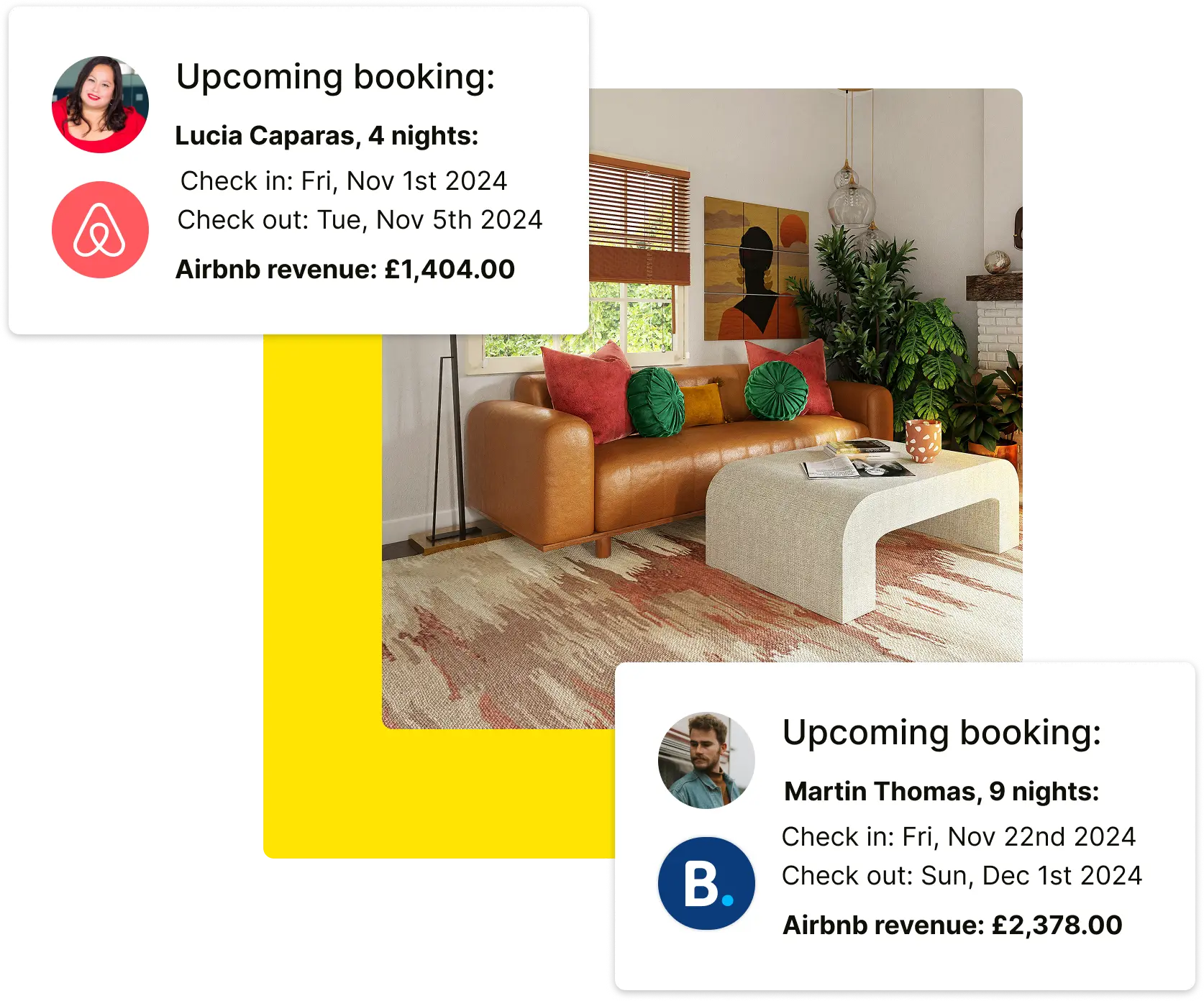

⭐ Rated 4.8/5 by 2,500+ Hosts
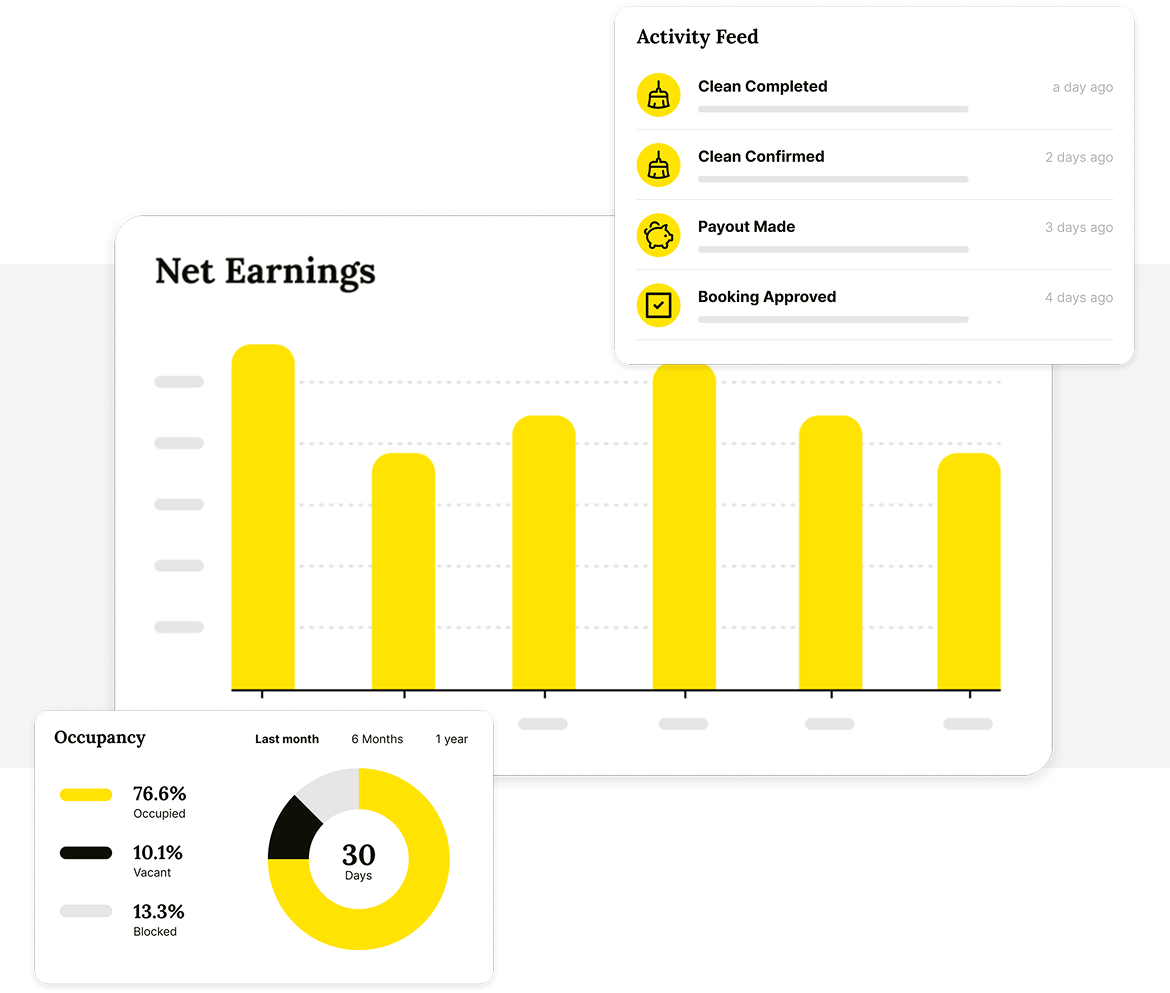
⚖️ The UK Property Ladder: Understanding Rent to Rent and Buy Schemes – Compare rent-to-rent with traditional buying to find what suits your property goals.
👉 Read the Guide: Buy vs Rent-to-Rent Explained
Financial Management and Licensing Essentials for Rent-to-Rent HMOs
Navigating the financial landscape and licensing requirements of running a Rent to Rent HMO (House in Multiple Occupation) is essential for landlords aiming for success in the UK property market. This section offers a snapshot of the financial model and a concise guide to acquiring an HMO licence.
Financial Overview
Income Potential: HMOs present a lucrative opportunity for property investors, typically yielding higher returns than single-let properties. The income potential of an HMO is calculated by considering the rents charged per room, the occupancy rates, and the size of the property. This model capitalises on the ability to house multiple tenants, thereby maximising rental income.
Key Expenses: Managing an HMO involves several key expenses:
- Mortgage Payments: If the property is mortgaged, monthly repayments are a primary financial consideration.
- Maintenance and Repairs: Ongoing maintenance and timely repairs are crucial to maintaining tenant satisfaction and property standards.
- Utilities and Bills: Utilities, council tax, and other similar expenses must be accounted for, often covered by the landlord in HMO arrangements.
- Management Fees: Employing a management company incurs additional costs but can alleviate the day-to-day operational burden.
- Void Periods: Planning for periods when rooms may be unoccupied is vital for financial stability.
Obtaining an HMO Licence
Mandatory Licensing: In the UK, an HMO housing 5 or more occupants from 2 or more separate households requires a mandatory licence. This regulation ensures the property meets safety and management standards.
Additional and Selective Licensing: Some local authorities implement additional licensing requirements for smaller HMOs or selective licensing schemes for all privately rented properties in certain areas. These schemes aim to raise standards in the private rented sector.
Application Process:
- To obtain an HMO licence, landlords must apply through their local council, providing necessary documentation and paying any associated fees.
- The process includes proving compliance with safety standards and may involve property inspections.
Penalties for Non-Compliance: Operating an HMO without the required licence can result in significant fines. It's imperative for landlords to understand and adhere to licensing requirements to avoid legal and financial repercussions.
In summary, understanding the financial implications and licensing requirements of managing a Rent-to-rent HMO is fundamental. By carefully navigating these aspects, landlords can ensure their investment remains profitable and compliant, setting the stage for a successful venture in the property market.
Final Thoughts: Maximising Success with Rent-to-Rent HMOs
The rent-to-rent HMO strategy presents a compelling opportunity for professional landlords, property owners, and realtors looking to maximise their returns in the UK's vibrant property market. By understanding the intricacies of managing Houses in Multiple Occupation, investors can tap into the high-income potential these properties offer, thanks to their ability to house multiple tenants and generate higher rental yields compared to single-let properties.
However, success in the rent-to-rent HMO market requires more than just identifying potential properties and securing tenants. It demands a thorough grasp of legal requirements, from HMO licensing to compliance with safety and management standards, ensuring that your investment remains both profitable and within the bounds of the law. Additionally, effective financial planning, covering everything from income potential and key expenses to the strategic management of void periods, is essential for sustaining long-term profitability.
As you embark on or continue your journey with rent-to-rent HMOs, remember that the foundation of success lies in informed strategies and meticulous management. Embrace the opportunity to transform unloved properties into thriving living spaces that not only fulfil a market need but also contribute to your investment goals. With careful planning, a clear understanding of legal obligations, and a commitment to quality tenant experiences, the rent-to-rent HMO strategy can be a lucrative addition to your property portfolio.
In summary, while the rent-to-rent HMO model offers significant rewards, it also comes with its set of challenges and responsibilities. Approach this investment strategy with diligence, armed with knowledge and best practices, to navigate the complexities of the HMO market confidently. By doing so, you'll be well-positioned to unlock the full potential of rent-to-rent HMOs, achieving success and sustainability in your property investment endeavours.
.webp)
🚀 Start & Scale Your Airbnb Business with Houst
Join Houst’s Airbnb Business Partnership Program to start, manage, and grow your short-term rental business. With expert marketing, automation tools, and dynamic pricing strategies, we help you maximise earnings and scale faster.
See How It Works
⭐ Rated 4.8/5 by 2,500+ Hosts
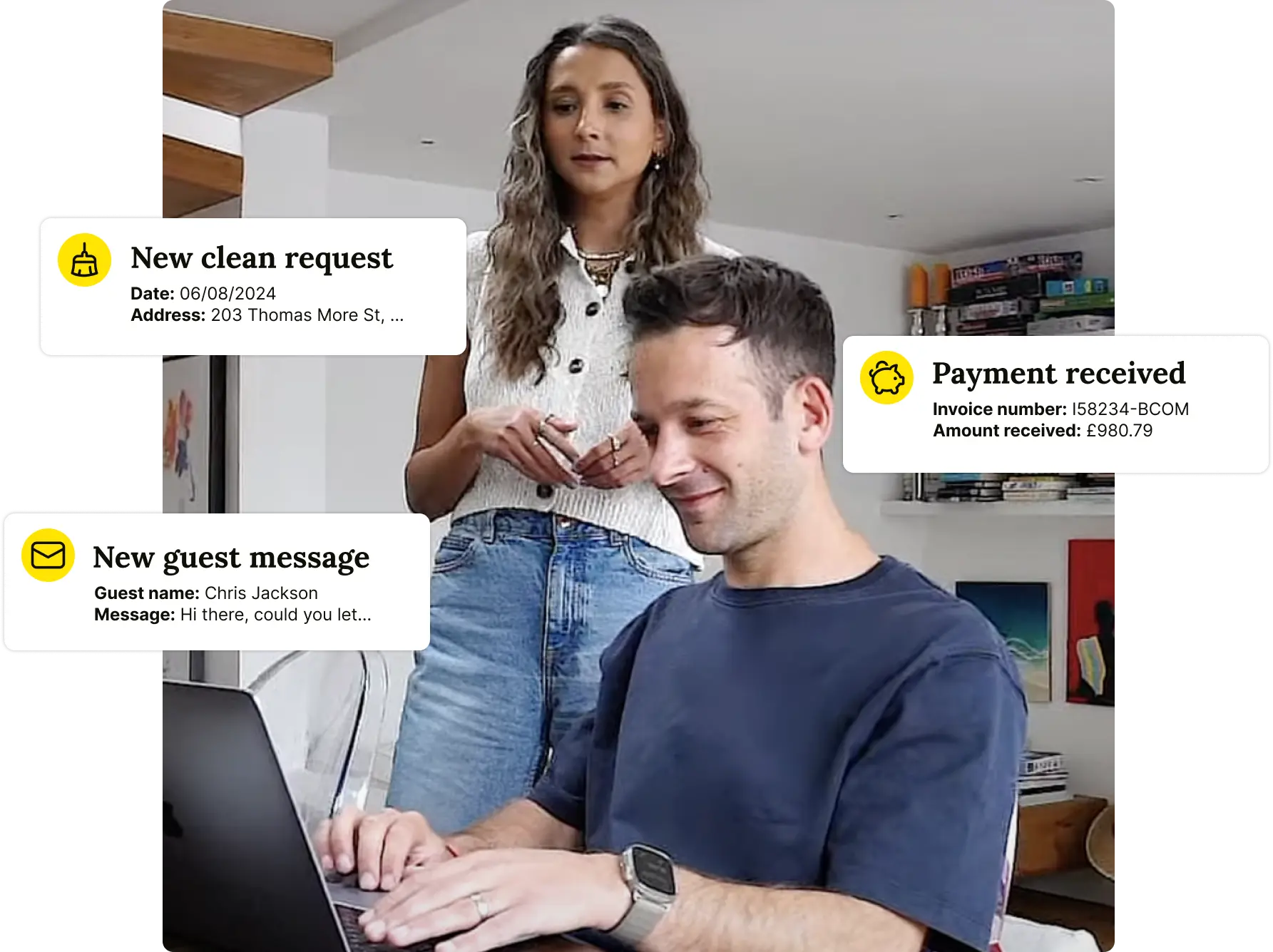
🏘️ Investor's Guide to Rent to Rent Serviced Accommodation – Learn how to scale a rent-to-rent business model with serviced units and boost your monthly profits.
👉 Read the Guide: Scaling with Serviced Accommodation
🔗 Must-Read Guides on Rent-to-Rent & HMO Strategies
📋 The Essentials of Crafting Rent to Rent Contracts – Legal structure, clauses, and templates to set your agreements up for long-term success.
🏢 Top UK Rent to Rent Companies: A Guide for Property Investors – Discover the leading companies in the space and what makes them stand out.
📈 The Ultimate Guide for Short Term Lets Investments: Strategies, Tips, and Market Insights – Apply strategic thinking to expand your portfolio sustainably.
💼 A Guide to Best Property Investment Strategies – Learn how rent-to-rent compares with other profitable strategies in the UK.
🏘️ The Landlord's Blueprint for Success in Serviced Accommodation Investments – Maximise returns through HMOs and serviced stays.




